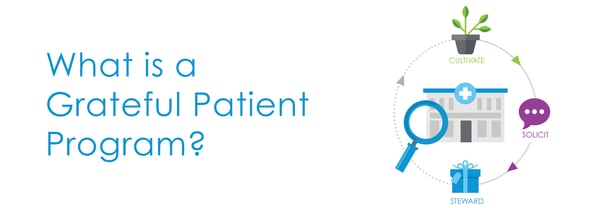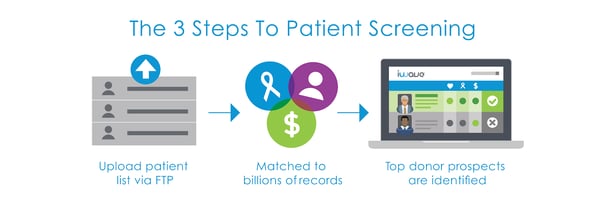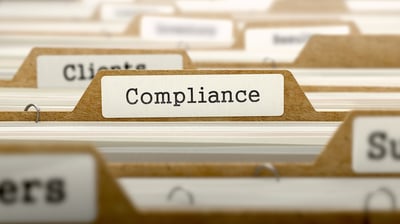

Healthcare philanthropy is growing.
Donations to hospitals and healthcare organizations totalled over $40 billion in 2017. That’s the highest recorded giving level to date for healthcare organizations.
One factor influencing the growth stems from the nonprofit organizations themselves – specifically the development or fundraising departments. Professional fundraisers with healthcare organizations are moving from reactive strategies – waiting for donations - to proactive strategies - seeking donations.
These proactive strategies are informed by relevant data, synthesized by skilled prospect development professionals, and implemented by development officers who build and nurture relationships with major donors.
However, while the overall nonprofit community may be in a period of steady growth, the number of major gift donors has actually decreased. In real terms, this means that fundraising professionals can expect fewer gifts, but with larger total values. Said another way, money is still available, though it takes more sophisticated methods for nonprofit organizations to find it. With this more complex philanthropic landscape, it’s important for nonprofits to work smarter to achieve their goals. This is where a grateful patient program comes into play.
To weather the shifting nonprofit industry, healthcare organizations are turning to grateful patient programs to help fulfill their mission. Not only do grateful patient programs enable healthcare organizations to think and act strategically when identifying prospective donors, they allow for major gift asks to be made with expert precision.
A grateful patient program is the perfect opportunity to work with current or past patients to determine if a connection exists between their giving behaviour and a healthcare organization’s mission. But before we go too far, let’s explore exactly what a grateful patient program is.

A grateful patient program is a process of identifying potential donors from a list of patients and moving them through the donor cultivation cycle.
This program could involve any number of fundraising strategies and tactics: patient screening, personal visits from board members or fundraisers, newsletters delivering updates from the hospital, or invitations to special events.
Let’s look at an example. Imagine a wealthy individual enters your hospital as a patient. Your patient screening process identified them as a potential major gift donor. Using the screening results, you now have a solid understanding of their wealth and philanthropic background as well as their “fit” for your particular organization. It’s time for your team to start to build a relationship with the individual.
Grateful patient programs all operate a little differently, but in general, if you’re running patient screening daily, once the screen uncovers a major gift prospect, a team member could visit the individual while still in the hospital. In fact, some wealthy donors who have given to you in the past even expect a visit from hospital fundraisers.
If your team determines it’s not the right time to approach a patient, maybe you could schedule a phone call after they are discharged. Remember: care and consideration are paramount when approaching a patient. The individual is a hospital patient first and a potential donor second.
To ensure your grateful patient program is successful, three things need to happen.
| Ensure your wealth screening technology has the ability to grow and customize itself to your organization. |
| Determine the ideal patient, including how often they donate, how much they have to give, and where their affinity or linkage lies. |
| Monitor and measure your grateful patient program, as well as ensure the ability to segment and sort your prospective and current patient donors. |
With the components of a successful grateful patient program in place, it’s time to set some concrete strategies. Regardless of whether you’re a grateful patient program expert or looking to get your program off the ground, we have you covered.
|
Related: Want to ensure you maximize the donations you're seeking? Check out these tips for boosting your fundraising efforts! |
Before lifting a finger with a grateful patient program, ensure your organization’s patient screening processes are ready. For those unaware, patient screening is a prospect identification process that highlights patients with the greatest potential of contributing donations to your healthcare organization.

Crafting the perfect patient screen requires three major ingredients:
| A list of patients submitted by the nonprofit organization. |
| Internal data about the nonprofit’s current donors, such as previous donation type and amount. |
| External data, such as wealth, biographic, and philanthropic information provided by an electronic wealth screening vendor. |
Taking into account the ingredients above is a sure way to complete a wealth screen properly. A wealth screen isn’t simply for finding high net worth indicators like compensation and real estate holdings. Rather, it’s about finding patients whose values align with your organization’s values, and have both a history and capacity of giving.
Because patient screenings happen at various time intervals, sometimes daily or weekly, it’s important to ensure your wealth screening tool allows for a quick turnaround. The last thing your nonprofit organization needs is a 14-day delay to receive wealth screening records when trying to learn more about patients in your hospital for only 72 hours.
And just as quick results are important, the ability to customize patient screening to your nonprofit organization’s goals is essential. For example, a research hospital may focus more on a prospective donor’s capacity while a community clinic could look more closely at their affinity.
Likewise, the research hospital may feel a major gift is anything over $150,000 while the community clinic would feel anything over $10,000 is a major gift! Regardless of how you define a major gift, a wealth screening tool should have the ability to adjust to the nonprofit organization using it.
Once your nonprofit’s patient screening strategy is set, the work is not over! It’s now time to start finding new donors. Before making a gift ask to every patient screened, it’s important to know who you’ll be asking. At first glance, every healthcare organization, big or small, thinks they want to solicit and convert high-net-worth patients. Think of this though: what if your high-net-worth patients have never donated a single dollar in their life? Do you think they will magically start donating to your organization?
To avoid this potential pitfall, look at a patient’s past giving behaviour. This will ensure the individuals asked have both capacity to give as well as history of philanthropic giving. To understand their giving behaviour, it’s important to acknowledge the importance of internal and external giving.
An internal giving score uses a recency-frequency-monetary (RFM) method to determine the current relationship you have with prospects based on giving data to your organization. Within your database, compile a list of donors which includes the following information: total gift count, total gift amount, and last gift date. This information, which is organization-specific, allows you to easily measure and compare donor scores.
For an external giving score, the process is slightly different. Rather than looking internally, take your donors and filter them externally against billions of wealth, biographic, and philanthropic data points. This result, called an external giving score, factors in propensity, affinity, and capacity and is custom to your organization.
After an organization is equipped with customized internal and external scores, it is important to focus on the prospect profile! As the master record for all information about an individual patient, a prospect profile will allow you to quickly reference crucial information vital to successful gift asks. Some examples of information to include would be a patient’s name, spousal details, career information and social media profiles.
To top it off, you can add notes for fundraisers or other team members to highlight critical insight not covered by the data. Maybe the patient had a recent conversation with a board member, or maybe you want to highlight recent changes in their liquidity. And because every organization is different - be sure to add data and information specific to your major gift process!
Equipped with specific and customized prospect profiles, you can act on opportunities faster and with increased confidence. Using donor prospect research software tools will allow you to cross-reference prospects with internal and external scores at the same time. This allows healthcare organizations of any size to develop a deeper understanding of their current and past patients.
Now that you understand the importance of a grateful patient program, it’s time to let it run! Over the next days, weeks, and months, it’s important to constantly analyze and review your patient screening results. This includes both the successes and failures. Use this time to also look for trends. Whether it’s inaccurate gift asks, missing data in profiles, or even trouble understanding the results, it’s critical to know where gaps in information exist.
If your nonprofit organization is continually making unsuccessful gift asks, your patient screening parameters may need adjustments to better reflect your potential donors. This is done by calibrating both internal and external giving scores to ensure they align better with your patients and their past giving history.
Of the same ilk, if your organization cannot even find enough relevant data to create accurate prospect profiles, there is a problem. To avoid this, be sure your patient screening platform is always leveraging high quality, accurate data.
As development teams continue to face the challenge of raising more major gifts with fewer donors and resources, it’s important to embrace the power of a grateful patient program. When organizations develop informed, evidence-based major gift asks, they’ll be able to weather the shifting nonprofit landscape and continue to fulfill their mission.
Let the money roll in. Using donor prospect research software can help you determine your most ideal patient donors in an easier, more fluid manner. Find the right solution for your needs today – only on G2.
Patrick is the Marketing Manager at iWave, where he helps drives new customer acquisition, client retention and target market awareness. With a strong interest in strategy, creative problem solving and finding efficiencies in everyday processes, Patrick enjoys helping iWave provide nonprofits with the tools to fundraise with confidence.
You get the flu and head to a nearby urgent care as your fever skyrockets. When you arrive at...
 by Alyssa Towns
by Alyssa Towns
Whether you are a hospital, private clinic, ancillary health care services provider, or...
 by Jasmine Lee
by Jasmine Lee
Health data is the lifeblood of the medical industry.
 by Jasmine Lee
by Jasmine Lee
You get the flu and head to a nearby urgent care as your fever skyrockets. When you arrive at...
 by Alyssa Towns
by Alyssa Towns
Whether you are a hospital, private clinic, ancillary health care services provider, or...
 by Jasmine Lee
by Jasmine Lee
Never miss a post.
Subscribe to keep your fingers on the tech pulse.



